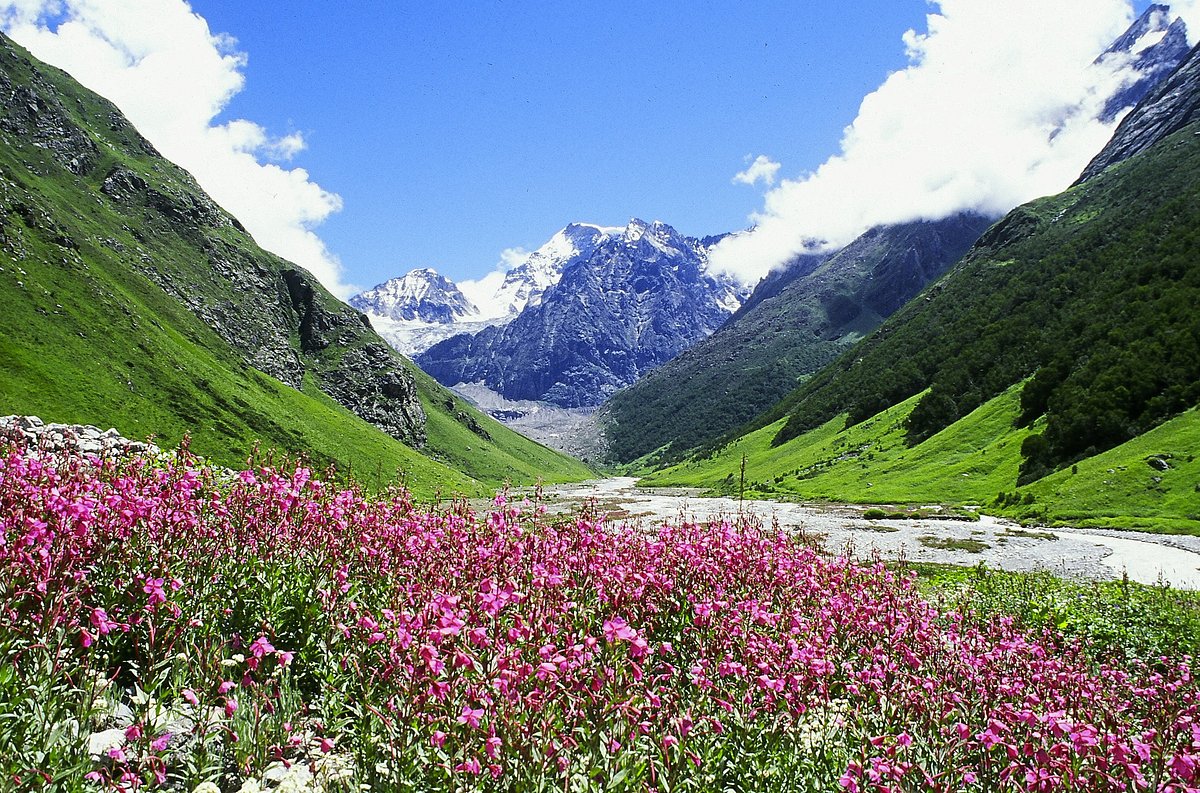

Table of Contents
A diverse group of trekkers has different reasons to trek. Some trek as a part of a routine fitness bonus. Others may trek for soulful bliss. On that note, the “Valley of Flowers” or “Byunder Valley” in the Chamoli-Pittorgarh district of Uttarakhand is open to visitors from the 1st of June of every year to the end of October. Be it a trek down the valley, a religious trip, camping, or simple hiking, every traveller has some beautiful memories to collect from different months in the valley.
In the write-up that follows, an account is present of the best time to visit the “Valley of Flowers” with different purposes.
The month of June is favourable for religious tourism along the Hemkund Saheb and Pandukeshwar, as one can enjoy solace. The solace comes from the very fact that the “Valley of Flowers” hardly has flowers blooming, the reason that it carries the name. The month of June is thus the most favourable for peace-monger trekkers. The weather during the month remains very soothing with the onset of the Himalayan breeze. The month also favours ecological and rural tourism.
The month of July is marked by Himalayan drizzles and the onset of the first bloom of the characteristics flora of the “Valley of Flowers”. Different coloured flowers begin to bloom from the monsoon month of July and characterize different regions of the trek. Lush green lands with different blankets of flowers, and the smell of petrichor-geosmin make one forget the nuances of hustled life.
The general flowers that one can catch at every bend are; orchids, marigolds, poppies, anemones, daisies, and primulas. The Brahma Kamal flowers and Himalayan Maple are found to bloom near the Hemkund Sahib, whereas birch and rhododendron make up the alpine zones of the valley national park. Along the treks of Ghangaria, one may also find the floral zones of lilies, calendulas, geranium, petunia, and so many more.
The rainy trails of July also make the cascading waterfalls, and small streams more mesmerizing than any other season of the year. Even the Prayags remain more all-embracing with the monsoon rain, making water sports treks more appealing.
As July, is marked by floral initiation, the month of August is the month to witness complete floral bloom. Naturally, August makes the best time for botanists, zoologists, and filmmakers. The month of August witnesses the maximum number of foreign tourists in the valley. Apart from the gorgeous floral bloom, August is the month to witness the best sunset views out of all the months as reported by the majority of the trekkers. The blanket blooms during August begin to define the valley completely; a scene one can never afford to miss. Trails of monsoon drizzle are heavier in August, giving a tremendous zest to the adventure-monger trekker to plan a hurricane tour across the valley and the suburbs.
September is known for post-monsoon floral blooms and an abundance of animal watches. During September, one can not only observe a myriad of diverse flora but also chance to see the Western Himalayan Fauna in the buffer zones of the Valley National Park and the Nanda Devi Biosphere Reserve. A record of having witnessed almost all the species of animals has mainly been obtained for this month. Naturally, with sober post-monsoon weather, beautiful floral blooms, and animal watch, August is the best month to plan a camping trip in the “Valley of Flowers”. As far as camping is considered, only Ghangaria is the officially permitted base from where one can plan subsequent tours. Naturally, Pony trips, Helicopter tours, and cottage camps make themselves more significant in August than the rest of the year.
October is the initiation of chilly weather along the Western Himalayas. A trekker can witness the gradual unfolding of winter with the folding out of the pleasant temperatures. With contrasts in weather, there is always a succession of changing floral beds. The flowers begin to shrive due to winter onset and remain scantily covered by winter-based flowers, alpine, and some coniferous trees. A trekker may also begin to witness varying degrees of snowfall. Characteristic initial winter flowers such as; Winter Jasmine, Primrose, Some species of Pansies, and many more, along with a thin sheet of snow capping, make the region a white paradise valley.
To begin with, very few places on the Earth are forever beautiful like the “Valley of Flowers”. Whatever the reason for visiting the valley, one must keep note of the prevailing weather conditions and make tour plans accordingly. One must also not miss out on arranging a sufficient amount of supplies for a complete plan of 3 to 4 days. The trekking spots and tourist spots tend to inject a fresh breath of life into every journeying soul following nature. On that note, even if the valley is hospitable to tourists from May, the best time to visit the same shall always remain from July to September.
Sign up to receive our email, delivering the latest stories straight to your inbox.
